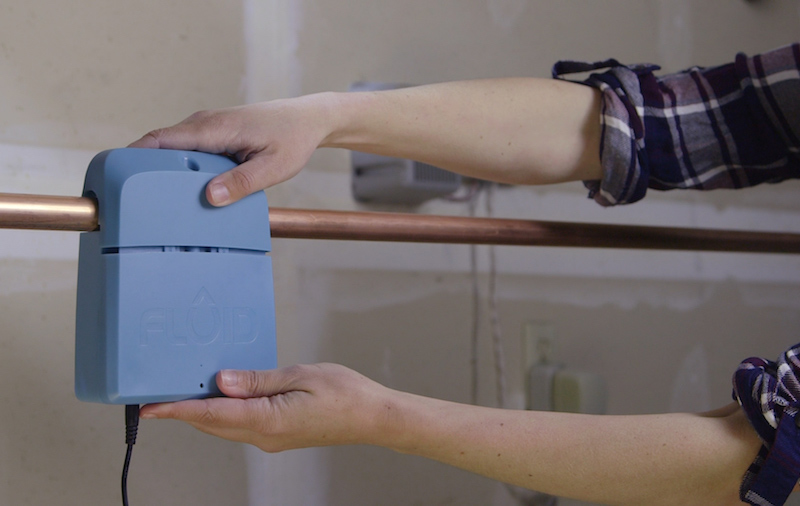Why Timely Water Leak Detection is Vital for Maintaining a Healthy And Balanced Home
Why Timely Water Leak Detection is Vital for Maintaining a Healthy And Balanced Home
Blog Article
Ingenious Solutions for Very Early Discovery of Water Leaks in Buildings and Facilities
As the honesty of structures and framework is paramount, the challenge of early detection of water leaks has spurred innovative solutions that assure to revolutionize the way we secure against prospective problems. From cutting-edge leakage discovery technologies to the release of IoT sensors for real-time tracking, the landscape of leakage avoidance is progressing quickly. Machine learning formulas provide a glance right into the future of leakage prediction, while thermal imaging provides a non-intrusive technique for determining hidden leaks. Automated water flow analysis systems are reshaping exactly how leaks are identified and dealt with, leading the method for a positive technique to water leak detection. Each of these services holds the essential to making certain the integrity and longevity of our built atmosphere, triggering a change towards a more lasting and efficient future.
Advanced Leak Discovery Technologies
Advanced leak detection modern technologies, outfitted with innovative sensors and algorithms, play an essential role in swiftly identifying and identifying water leakages in numerous setups. These innovations use a combination of acoustic, thermal, and electromagnetic noticing methods to find leaks properly. Acoustic sensing units find the audio of escaping water, allowing for precise localization of the leak resource. Thermal imaging spots temperature modifications triggered by water leakage, supplying one more efficient method for leak recognition. Electromagnetic sensing units can recognize changes in magnetic fields triggered by water, supplying yet an additional layer of leakage detection ability.

IoT Sensors for Real-Time Surveillance
In the world of contemporary water leakage detection, the assimilation of IoT sensing units for real-time surveillance stands for a critical improvement in improving proactive leakage discovery capabilities. These sensing units supply continual surveillance of water systems, offering real-time information on water circulation rates, pressure variations, and temperature modifications. By leveraging IoT innovation, these sensors can detect even the smallest abnormalities in water use patterns, allowing early identification of possible leaks prior to they rise into significant issues.
IoT sensors send information to a centralized platform, where innovative algorithms examine the information and create alerts or notices when irregularities are identified. This real-time surveillance ability enables home owners or facility managers to without delay attend to leaks, decreasing water damage, minimizing repair work costs, and saving water sources.
Moreover, IoT sensing units can be integrated with building management systems, enabling for automated feedbacks to detected leaks, such as shutting off water valves or triggering pumps to mitigate the effect of leaks. In general, the execution of IoT sensors for real-time surveillance considerably improves the performance and efficiency of water leakage discovery in buildings and infrastructure.
Maker Discovering Algorithms for Leakage Prediction

One trick advantage of using artificial intelligence for leakage prediction is its ability to continually learn and boost its precision gradually. As even more information is accumulated and fed into the algorithm, it can refine its predictions and adjust to transforming conditions, inevitably increasing the reliability of leak detection systems.
Additionally, device knowing algorithms can aid in determining refined indications of leakages that may go unnoticed by standard monitoring approaches. water leak detection. By analyzing complex data collections in real-time, these formulas can offer early cautions and alerts, enabling for timely intervention and preventive maintenance to reduce prospective water damage and associated costs
Making Use Of Thermal Imaging for Leakage Detection
Thermal imaging technology offers an encouraging approach for detecting water leakages in numerous systems and frameworks. By using infrared radiation and temperature level variances, thermal imaging video cameras can determine hidden leakages you could try these out that are not quickly noticeable to the naked eye. When water escapes from pipelines or frameworks, it usually alters the temperature of the bordering area, producing temperature differentials that thermal electronic cameras can capture. These temperature level irregularities are then equated right into noticeable pictures, highlighting the precise area of the leak.
One of the key benefits of thermal imaging for leakage discovery is its non-intrusive nature. Generally, the usage of thermal imaging innovation boosts the efficiency and precision of water leak discovery, making it a valuable device for maintaining the stability of buildings and frameworks.
Automated Water Flow Analysis Systems
How can computerized water flow evaluation systems transform the discovery and monitoring of leaks in different systems and frameworks? Automated water circulation analysis systems provide an aggressive method to leak detection by continuously monitoring water flow rates and patterns. By establishing standard data, these systems can quickly determine inconsistencies that may show a leakage, allowing timely intervention to avoid substantial damage.
These systems make use of innovative algorithms to evaluate real-time information and give prompt notifies when abnormalities are detected, permitting helpful hints quick action to be taken. In addition, automated water circulation evaluation systems can be incorporated with building management systems or IoT systems, enhancing overall effectiveness and making it possible for remote tracking abilities.
Furthermore, the information gathered by these systems can be used for predictive maintenance objectives, helping to identify potential weak points in the framework prior to leakages happen. Generally, the execution of automatic water circulation analysis systems can substantially improve leak discovery and administration practices, inevitably causing cost financial savings, reduced water waste, and increased sustainability in buildings and framework.

Verdict
Finally, the integration of sophisticated leak detection modern technologies, IoT sensing units, equipment knowing algorithms, thermal imaging, and computerized water flow analysis systems provides cutting-edge services for early discovery of water leakages in structures and framework. These modern technologies make it possible for real-time tracking, prediction of leaks, and efficient discovery techniques to stop water damages and waste. Implementing these solutions can assist in preserving the stability and sustainability of water supply in various setups.
Report this page